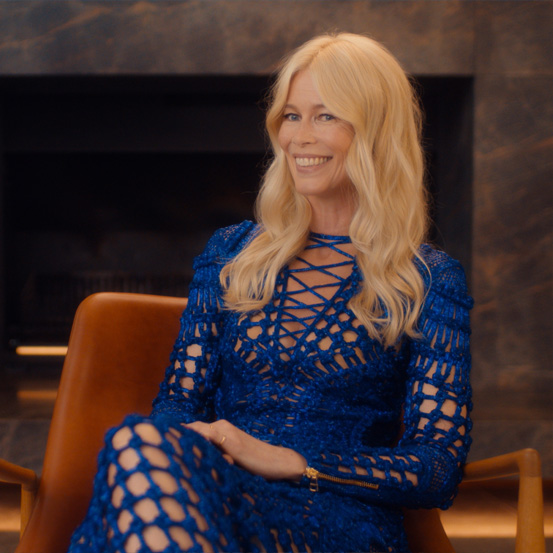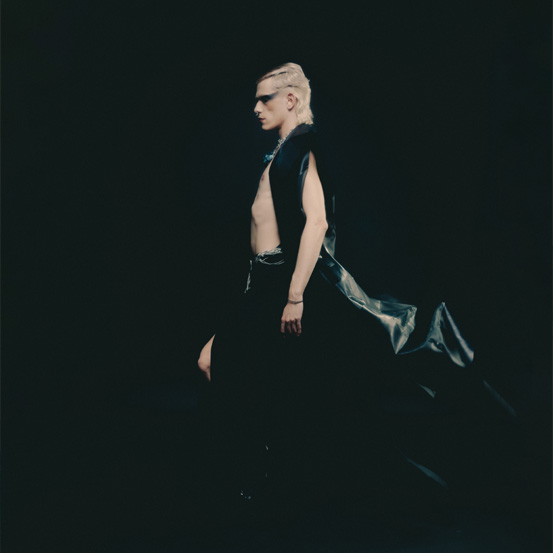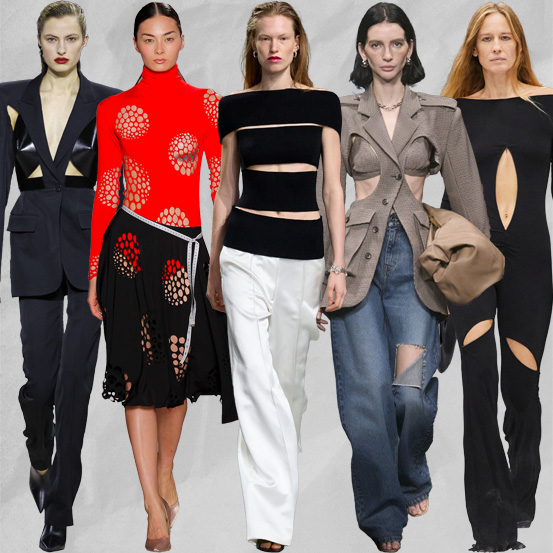A new exhibition in Paris of the pioneering designer reveals a standard today’s industry would struggle to follow
A new exhibition in Paris of the pioneering designer reveals a standard today’s industry would struggle to follow
I am not often ashamed of fashion and the eternal search for the new that my profession involves. But looking at the artistic, timeless and magical clothes designed by Mariano Fortuny a century ago, left me, as a fashion editor, filled with shame and chagrin. How is it possible that the Spanish-born Fortuny, emerging in Venice after the First World War, could have designed clothes in liquid colours and painterly surfaces that I, or any woman, could wear today?

A chocolate-toned silk-velvet coat embossed with caramel-coloured gold thread and a gold silk-satin lining, by Mariano Fortuny from c. 1920
A chocolate-toned silk-velvet coat embossed with caramel-coloured gold thread and a gold silk-satin lining, by Mariano Fortuny from c. 1920
Crédito: COLLECTION PALAIS GALLIERA © STÉPHANE PIERA / GALLIERA / ROGER-VIOLLET

Detail of the sleeve
Detail of the sleeve
Crédito: COLLECTION PALAIS GALLIERA © STÉPHANE PIERA / GALLIERA / ROGER-VIOLLET
Even though model and philanthropist Natalia Vodianova wore a Jeff Koons balloon dress at the recent Fabulous Fund Fair in New York, which her Naked Heart Foundation co-hosted with amfAR, she proved the eternal fashion reality of Fortuny when, in 2009, she wore an original Fortuny ‘Delphos’ dress in a waterfall of red pleats at the Met Ball and a cascade of sky-blue Fortuny at the British Fashion Awards later that year.
Those dresses are not on show at “Fortuny, A Spaniard in Venice” at the Palais Galliera in Paris. But pleats are everywhere, falling straight but shivering and quivering with light as they surf the shape of the female form.

Crédito: COLLECTION PALAIS GALLIERA © L. DEGRÂCES ET P. LADET / GALLIERA / ROGER-VIOLLET
And yes, you could wear every single outfit today – I had my eye on a velour top and skirt – without looking dressed for a costume party. This is because the shape is made by the body, rather than by stuffing the human form into a pre-ordained silhouette.

Crédito: COLLECTION PALAIS GALLIERA © L. DEGRÂCES ET P. LADET / GALLIERA / ROGER-VIOLLET
“Mariano Fortuny is the couturier who broke down frontiers the most. He revolutionised fashion by freeing the female body yet at the same time was inspired by the ancient Grecian periods,” says museum director Olivier Saillard about his last major show before he leaves his post in January 2018. What a way to go!

Crédito: COLLECTION PALAIS GALLIERA © FRANÇOISE COCHENNEC / GALLIERA / ROGER-VIOLLET
This Fortuny exhibition is “old school”, meaning not entirely didactic, but informative. And that is because, as well as showing the garments, it offers a close up of the extraordinary fabrics, many with treatments whose secret formula the designer and his wife Henriette Negrin took to the grave.

A display of fabric samples from 1912 by Mariano Fortuny (1871-1949), including his signature richly embellished and sumptuous silk velvets COLLECTION PALAIS GALLIERA © L. DEGRÂCES ET P. LADET / GALLIERA / ROGER-VIOLLET
A display of fabric samples from 1912 by Mariano Fortuny (1871-1949), including his signature richly embellished and sumptuous silk velvets
Crédito: COLLECTION PALAIS GALLIERA © L. DEGRÂCES ET P. LADET / GALLIERA / ROGER-VIOLLET
For my next visit I shall take a magnifying glass to marvel again at the silk velvet, with the “greenery-yallery” colours of the period or in midnight blue with flat golden leaves and undulating bunches of grapes.
Almost every piece on display, offered over the years by upper-crust ladies as a donation to the museum’s rich reserves, has details of the original owner. These were artistic women with a penchant for beauty rather than mere high society. “My” top and skirt were worn by the daughter of Élaine Greffuhle, later the Duchess of Gramont, who was said to be the model for Proust’s character, the Duchess of Guermantes, in À la recherche du temps perdu. The Duchess’ glorious wardrobe was brought to life in a previous Saillard exhibition at the museum in 2016, La Mode Retrouvée: Les robes trésors de la comtesse Greffulhe.
With the passing of time, it is difficult to know to what extent the wealthy and artistic clients collaborated with Fortuny, asking that the Cerulean blue of a Grecian gown might be faded to the shade of a rain-washed sky; or deepened to an azure Mediterranean mid-day. A display of silken skeins allowed the client to choose their preferred pigment.
Although the exhibition provides information about how velvet was treated and the flat silk pleated, this can never speak for the relationship between creator and wearer. Some influence may have come from the client, yet it seems more likely that Fortuny, like painters of the Aesthetic Movement of the late 19th century, had a penchant for secondary colours and for mixes of nature’s green and princely gold.

Crédito: COLLECTION PALAIS GALLIERA © STÉPHANE PIERA / GALLIERA / ROGER-VIOLLET

Crédito: COLLECTION PALAIS GALLIERA © STÉPHANE PIERA / GALLIERA / ROGER-VIOLLET
Here is a description by Marcel Proust from 1919, from À l’ombre des jeunes filles en fleurs (the second volume of À la recherche du temps perdu):
“An artist in Venice, Fortuny, has found the secrets of marvellous fabrics ... and for several years women have been walking around in them – but especially wearing at home – in outfits as magnificent as the Venetian patricians with their oriental designs.”

Crédito: COLLECTION PALAIS GALLIERA © STÉPHANE PIERA / GALLIERA / ROGER-VIOLLET
The main story that emerges from the Galliera show – and the reason why I felt humbled by its beauty – is the quality, industry and sheer beauty of Fortuny’s work.
I realised the obvious influence of Ancient Greece, but there were many questions. Were the colours I was looking at – olive green and a grey blue – faded by time? Or was this how the leaves of Spain’s olive trees were linked in Fortuny’s mind’s eye to the still, stale water around Venice? Above all, what did it mean to this artist to create timeless clothing, when the essence of fashion is change?
I looked at the many nuggets of information: the letters to clients; the photographs taken for a designer who was smart enough to demand copyright for his clothing inventions… There were also images of his shops in Paris and London.
What a thrill it was to discover that the London address at 28 Maddox Street was just three doors away from the Condé Nast International office where my team is based! I imagined walking into this boutique, filled with colour, to stroke the velvets and let the silken pleats slide through my fingers. I daydreamed about slipping back in time to 1909, when the glamorously crazy Marchesa Casati wore the ‘Delphos’ gown, which propelled Fortuny to fashion fame.
The exhibition ends with touches of the present that reverberate back to Fortuny’s work: a film including Natalia Vodianova in her vintage gown; the Fortuny-inspired collection at Valentino in 2016 – all Grecian headpieces and a mermaid length of dress. One colourful Pleats Please vision from Issey Miyake – no stranger to my wardrobe – proved the infinity of fashion as drapes and folds.

An Issey Miyake dress (right) shows the lasting influence of Fortuny's revolutionary pleating techniques
An Issey Miyake dress (right) shows the lasting influence of Fortuny's revolutionary pleating techniques
Crédito: COLLECTION PALAIS GALLIERA © STÉPHANE PIERA / GALLIERA / ROGER-VIOLLET
I did a second tour of the Galliera exhibition, thinking of my own clothes collection. I am convinced that what I might have bought from Fortuny then, would be just as wearable and desirable today. A true fashion miracle.
“Fortuny, a Spaniard in Venice” (“Fortuny, un Espagnol à Venise”), is at the Palais Galliera until January 7th, 2018. This exhibition closes the Palais Galliera’s Spanish Season, which opened with “Balenciaga, Working in Black” (Balenciaga, l’oeuvre au noir”) at the Musée Bourdelle, and “Spanish Costumes: Darkness and Light” at the Maison de Victor Hugo.
Most popular

Um novo documentário relembra os momentos mais icónicos da Moda dos anos 90 - como vistos na Vogue
24 Jul 2024

.png)
Relacionados

.png)



